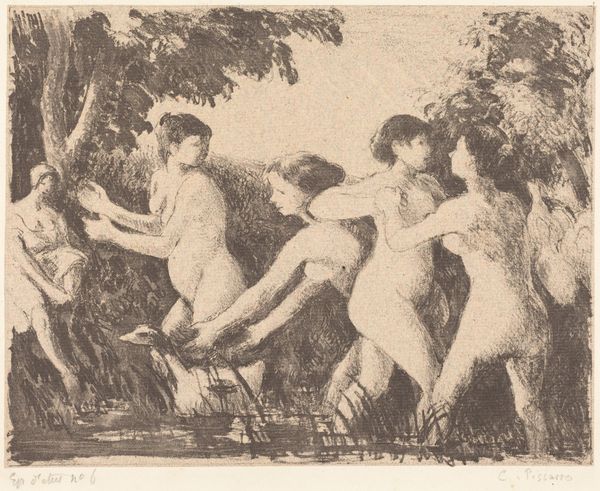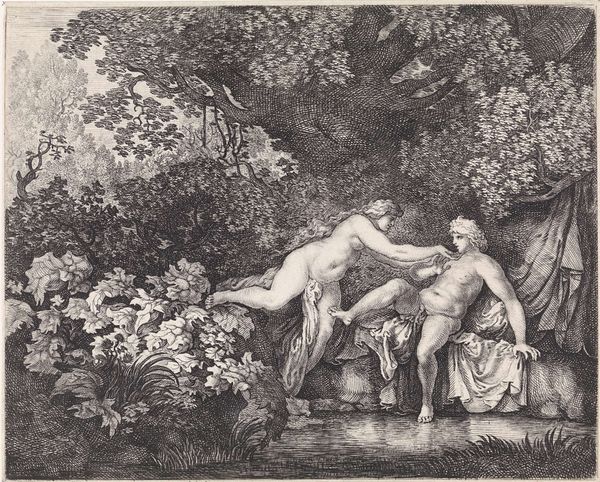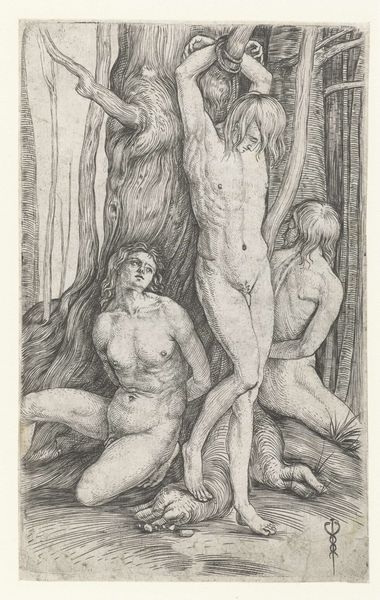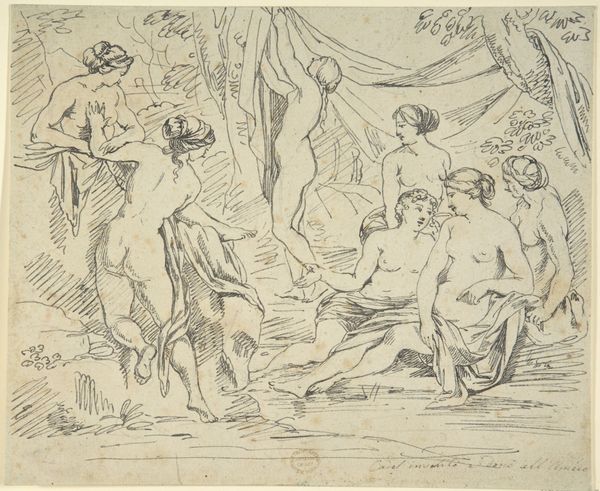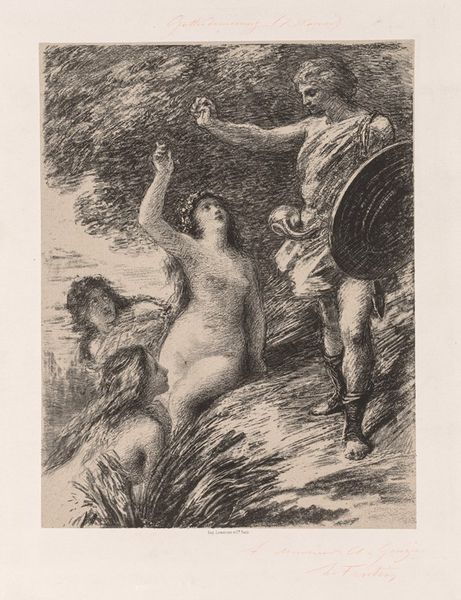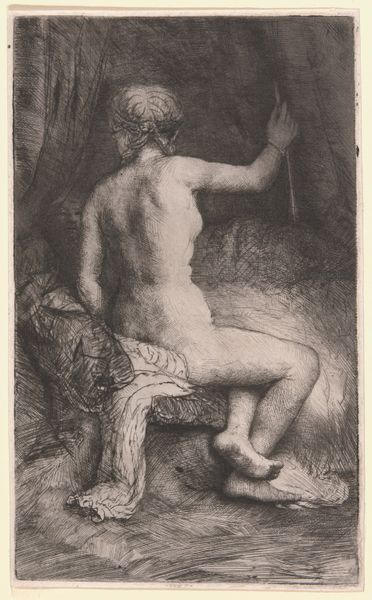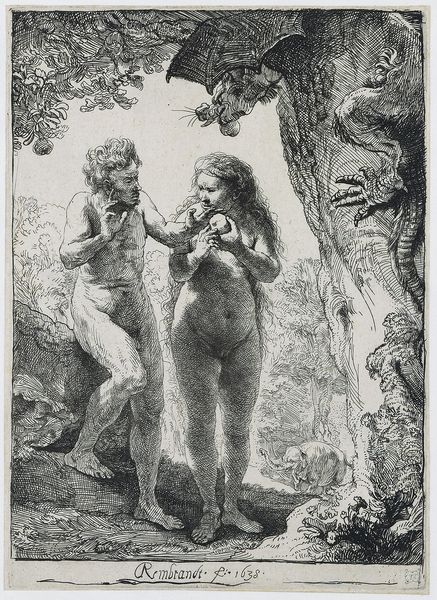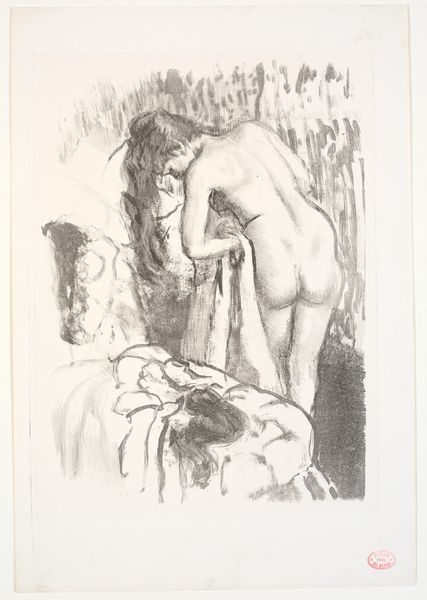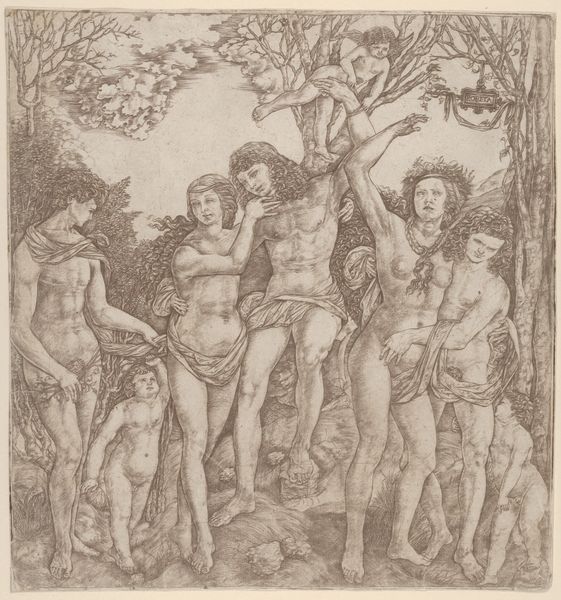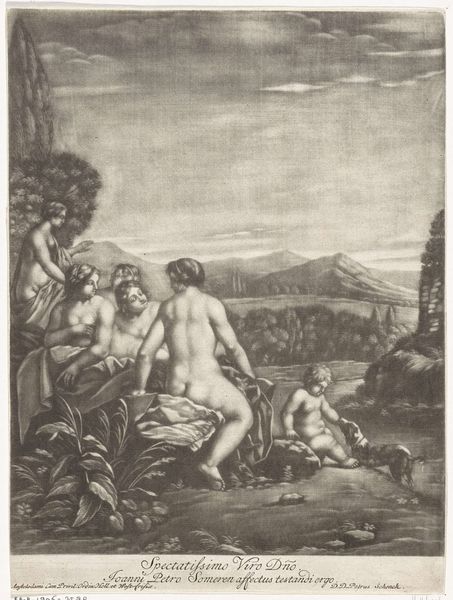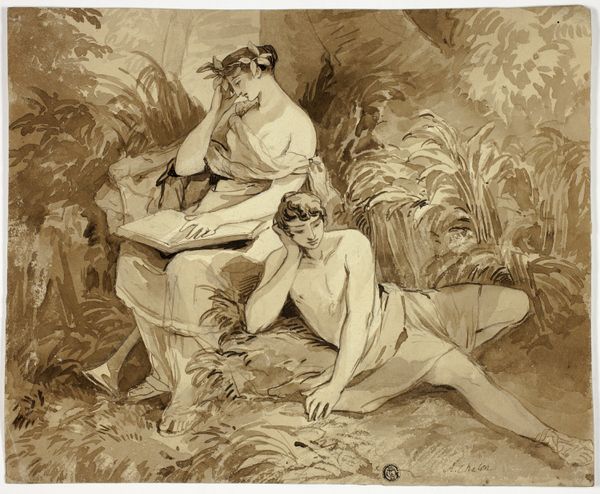
drawing, ink, pen
#
pencil drawn
#
drawing
#
facial expression drawing
#
pen sketch
#
pencil sketch
#
figuration
#
ink
#
pencil drawing
#
romanticism
#
pen-ink sketch
#
pen work
#
pen
#
portrait drawing
#
pencil work
#
genre-painting
#
nude
#
pencil art
Dimensions: 174 mm (height) x 156 mm (width) (bladmaal)
Curator: Looking at this image by Wilhelm Marstrand, we have "Three Bathing Women", dating roughly between 1810 and 1873. It’s currently housed at the SMK, the National Gallery of Denmark. My first impression is one of subdued sensuality— the scene almost hidden in the stark lines of ink on paper. What do you see? Editor: My immediate thought goes to the materials and how this rough-hewn ink sketch almost feels like a direct trace of the artist’s hand, revealing the means of production right on the surface. The strokes have a palpable weight, almost mimicking the tactile experience of carving stone. Curator: Yes, and when thinking of romanticism through a feminist lens, consider how these figures relate to canonical depictions of women, nature, and freedom in artistic history. Are these women reclaiming their bodies in ways previously unacknowledged in such eras, beyond the conventional male gaze? Editor: That's fascinating. Focusing on material, though, the repetitive hatching creates a sense of depth and shadow but also speaks to a certain kind of labor. Think about the physical act of producing countless lines, a form of repetitive mark-making. It’s almost textile, like weaving, no? Curator: I see that. But if you relate it to artistic representations, it can act as an interesting foil for examining contemporary issues of gendered space and access. Public bathing sites historically held social codes of segregation or exclusion that intersect with economic status, so what kind of resistance, negotiation, or agency do these women convey? Editor: The stark materiality and the subject matter suggest an exploration of classical motifs. I am interested in the materiality; perhaps cheaper than painting with oil paints. A fast medium. Did that accessibility perhaps influence how or who was being rendered at that time? It moves away from, say, idealized paintings on commission, where a higher barrier for participation in their making existed. Curator: You raise an interesting point; there is definitely potential to investigate how shifts in artistic material affect a wider shift in perspective, access, and cultural value. This Marstrand work asks questions about whose image gets created, how is it distributed, and who defines "good art." Editor: Indeed. Ultimately, thinking through materiality as cultural labor reveals so much, like social anxieties, tensions in cultural values, or unspoken historical realities! Curator: Agreed! Engaging these varied views can show that there's a lot we can unveil regarding art, identity, gender, and history in even such simple sketches as this one.
Comments
No comments
Be the first to comment and join the conversation on the ultimate creative platform.


